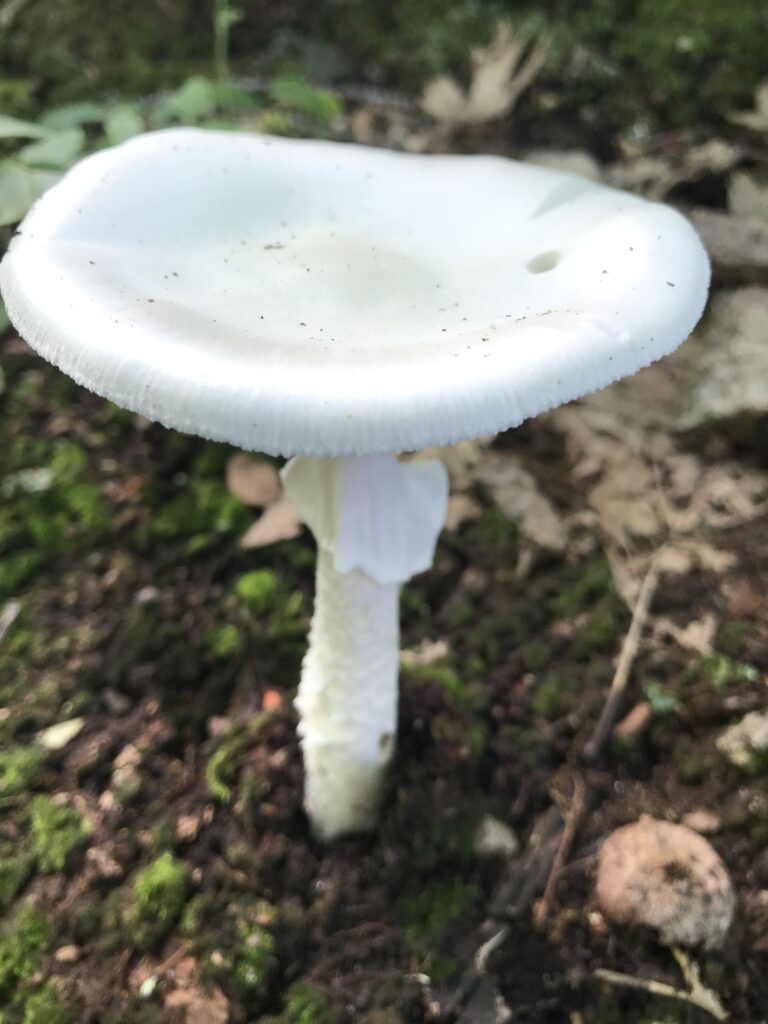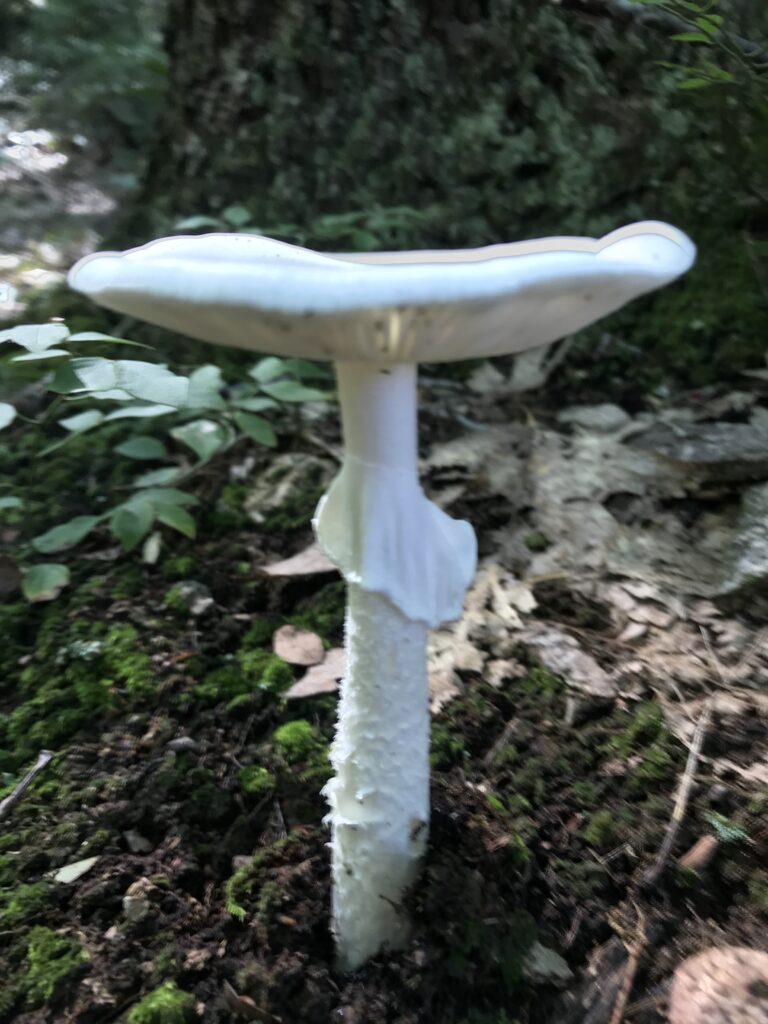| Ecology & Habitat | Mycorrhizal, Growing Singly, around or near the base of hardwood trees. Located in deciduous forests, in rich soil, and near hardwood trees. |
| Edibility, Taste & Odor | Extremely Toxic |
| Cap | White cap, no bruising. |
| Gills | White gills, no bruising. |
| Stem | White stem, no bruising. |
| Partial Veil | White, smooth, often large and skirt like. |
| Universal Veil | White, fragile, sac like, and usually beneath the surface of the ground or below leaf litter. |
| Spores | White |

The name of Amanita bisporigera name is derived from the Latin words “bis” meaning “two” and “spor” meaning “spore,” referring to the fact that it has two spores per basidium. The basidium are a reproductive structure that houses spores. This mushroom is commonly known as the “destroying angel” due to its highly toxic nature. It is completely white. It has a white cap, a tall white stem with a distinctive white ring around it, and a fragile white sac like volva at the base of the stem (which is usually located below ground and must be excavated to be seen). The gills are white and closely spaced, and the spores are white. Another important feature is that the flesh does not bruise. There are other Amanita mushrooms with a smooth cap, that are all white (or almost all white) in color that could be easily be mistaken for bisporgeria. For example, Amanita Phalloides “The Death Cap” which will have a more greenish yellow cap. Or, several mushrooms from the Amidella Section of the Amanita genus. Amanitas are in the section amidella have flesh which will bruises reddish brown or purplish brown. Despite its toxicity, Amanita bisporigera is a beautiful mushroom to observe in the wild.



